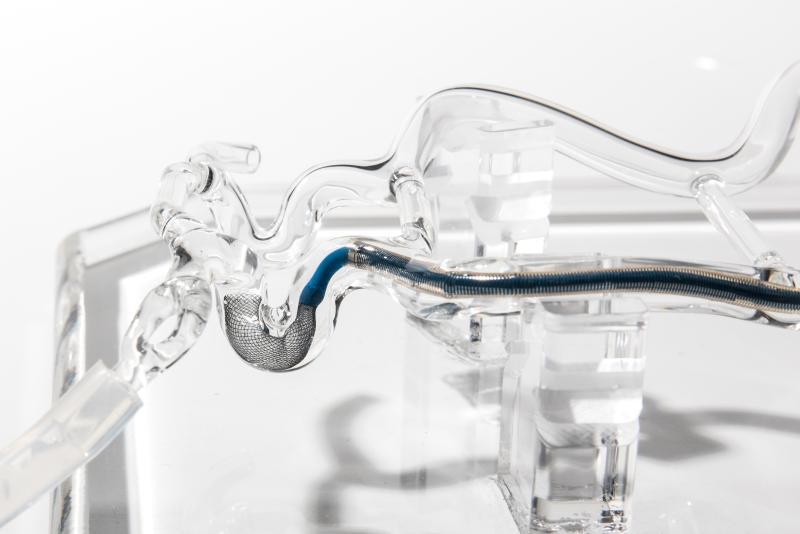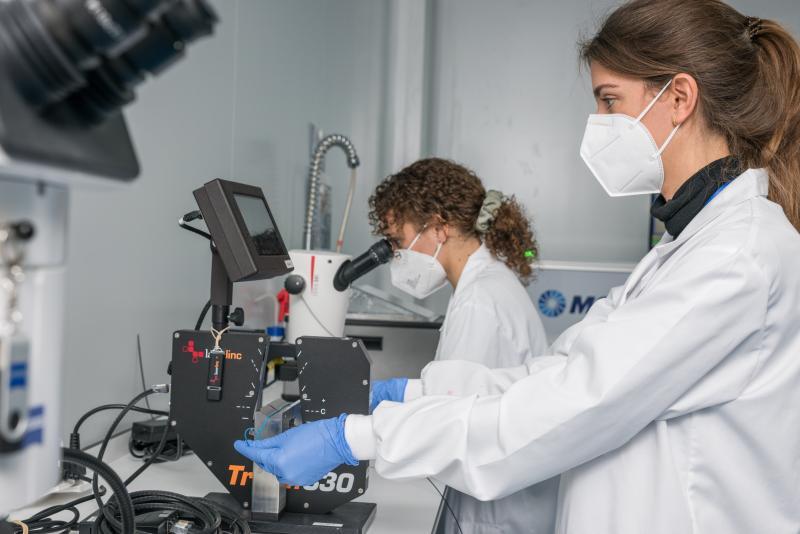A Barcelona-based medical technology company has developed an cost effective innovative stroke treatment that restores blood flow better and reduces the risk of further clotting
François Salmon remembers vividly the moment he read the text message on his mobile phone: “All’s well. Clot retrieved. Patient is fine”. It was the end of 2019 and a middle-aged woman at the Hospital Vall d’Hebron in Barcelona had just successfully undergone a thrombectomy a few hours after her stroke.

François Salmon is co-founder and chief executive of medical technology company Anaconda Biomed.
The surgery was the first of a clinical trial by Anaconda Biomed, a medical device start-up which has revolutionized the treatment of stroke. “I’m happy that we’ve helped healthcare professionals save lives and reduce disability after stroke,” says Salmon, Anaconda’s chief executive since 2018.
To carry out further trials, Anaconda Biomed received venture debt funding of up to €10 million from the European Investment Bank in October 2021. The loan also gave the Barcelona company the liquidity it needed to keep going during the COVID-19 pandemic.
“Anaconda’s system is refreshingly simple,” says Tom Andersen, the European Investment Bank engineer who worked on the loan. “And there’s no better mission than improving or even saving lives. This system offers a cost-effective improved treatment. ”
Innovative stroke treatment moves like an Anaconda snake
The carotid arteries, which run from the heart to the brain on each side of the neck, can thicken when a clot blocks a major blood vessel. Blood supply to vital parts of the brain is interrupted. That’s a stroke. The longer the artery is clogged, the more likely it is that there will be lasting damage, such as paralysis and speech problems.
What are the treatments for a stroke?
Many people with an ischemic stroke caused by a blood clot (known as a thrombus) get drugs to help dissolve the blockage. Mechanical thrombectomy is another method. It removes the clot mechanically. This helps restore blood flow to the brain, preventing some lasting damage.
Traditional techniques of clot removal sometimes leave behind fragments of the thrombus, which might clog other arteries. So Anaconda developed a catheter that is designed to locally arrest flow and remove the whole cerebral thrombus without fragmenting it. Like an Anaconda snake that pushes away any root, rock or branch to move forward, the funnel-shaped and self-expanding catheter reaches the diameter of the artery - up to 5 millimetres.
In this way, the catheter can fully trap and remove the clot from the obstructed vessel. “Once the clot is out, the damage stops,” says Salmon. He is well aware that doctors in stroke care work in the midst of medical emergencies. From the beginning of a stroke, every minute is crucial. Anaconda’s advanced thrombectomy is also offering physicians a device to restore blood flow better.

According to the World Health Organization, stroke is the first cause of disability and the second cause of death worldwide. Anaconda developed a catheter that is designed to locally arrest flow and remove the whole cerebral thrombus without fragmenting it.
Out of the pandemic, with the help of the EU
Anaconda’s thrombectomy is a highly skilled operation which requires stroke services designed to deliver the treatment. Unfortunately, the COVID-19 pandemic made the recruitment of patients and their stroke treatment complicated. So European Investment Bank investment officer Borja Carsi reached out to Anaconda to offer them a loan supported by European Guarantee Fund, which helps businesses affected by the pandemic.
Carsi was impressed by Anaconda’s board of directors and scientific advisors, which include several national and international experts in biomedicine. Like the neurologist Marc Ribó and Ofir Arad, a doctor in organic chemistry, who co-founded Anaconda Biomed in 2015 to carry out their project of advanced thrombectomy. A few years later, they set up the first human study to demonstrate the efficacy of their innovative system.

Stroke killed three times more people than COVID-19 in the same period. Anaconda’s lifesaving work is also supporting health care professionals and national health systems.
Now that the clinical trials are over, Salmon takes stock of their progress: the results gathered with the 73 patients enrolled so far (out of the 125 initially foreseen for the clinical study) already validated earlier testing and fulfilled all expectations for the safety and efficacy of the first generation catheters. Unquestionably, Anaconda’s advanced system has had a dramatic, positive impact on the post-stroke life of the patients.
Thanks to the European Investment Bank loan, Anaconda can now move forward with testing the second generation catheters. “The results have been very good so far,” says Salmon, “but we prefer to stay cautious as we deal with a matter of life and death.”
